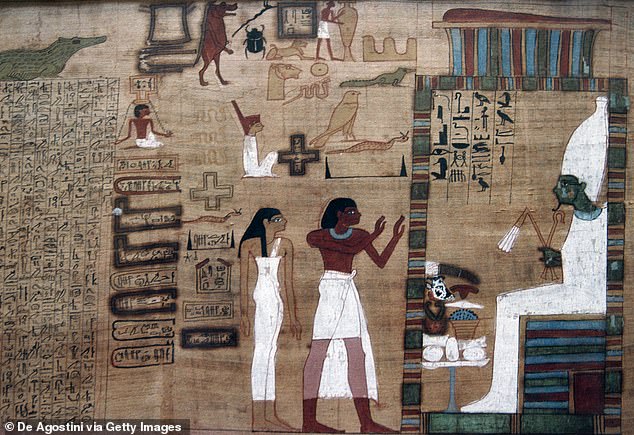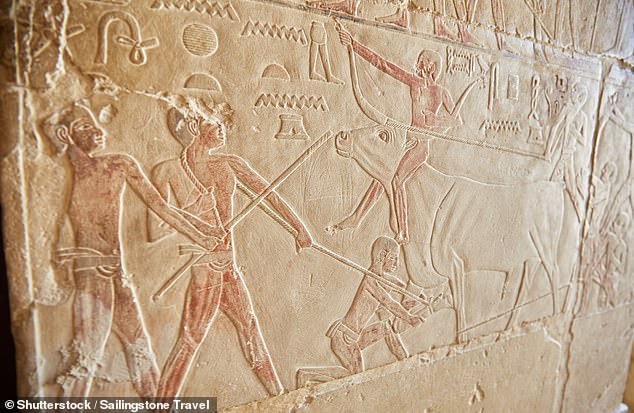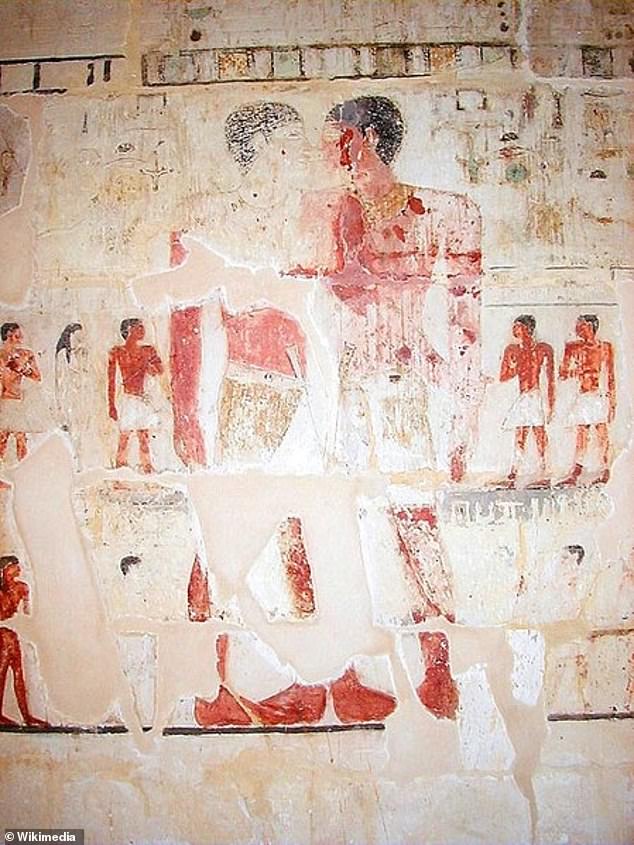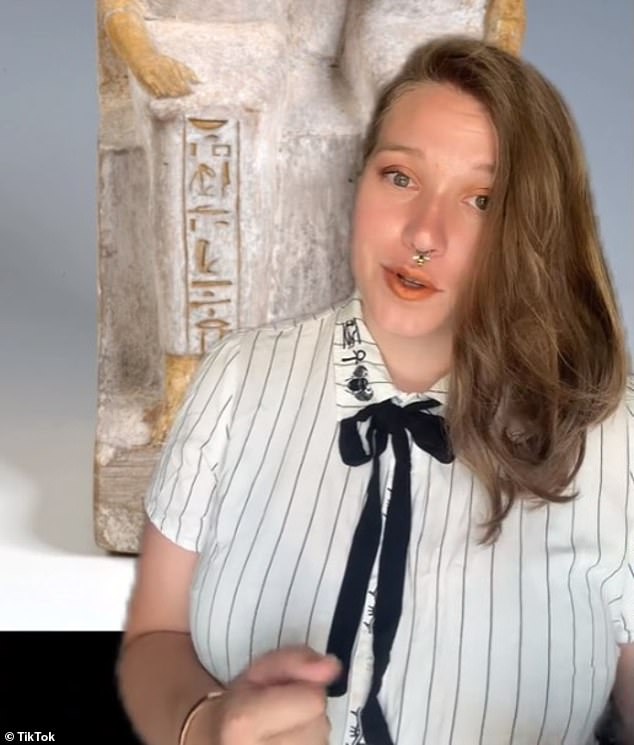Archaeologist claims lesbian love was ‘culturally acceptable’ in ancient Egypt, based on 2,000-year-old artifacts
An archaeologist has claimed that lesbian sex was culturally acceptable in ancient Egypt, based on texts and images dating back to the 5th Dynasty.
Jen Cullison, who goes by Jen the Archaeologist on TikTok, explained that a 970 BC copy of the ‘Book of the Dead’ and a passage in the ‘Book of Dreams’ from 1350 BC tell stories of women having sexual relationships without consequences.
Cullison also highlighted ancient Jewish writings that discussed the liberal lifestyle, calling lesbianism “the deeds of Egypt”, and parts of the Torah have also been interpreted as the civilization allowing two women to marry.
While no evidence has been found that depicting same-sex relationships was punishable, homosexuality has been a major debate among Egyptologists who have said that images of same-sex couples are nothing more than siblings.
Idet and Ruiu, who are immortalized in a limestone statue, could have been mother and daughter, sisters or a homosexual couple
Cullison shared her claims on TikTok video on her account, it appears that she has a master’s degree in anthropology and is currently working on her doctrine.
Many discoveries from ancient Egypt have painted a picture of what some claimed to be same-sex couples.
The statue of Idet and Ruiu created in the 18th Dynasty has been a mystery since its discovery in 1914.
The painted limestone statue shows the two women side by side with their arms wrapped behind each other’s backs.
Experts are unsure about their relationship and speculate that it may involve mother and daughter, sisters or a same-sex couple.
Other possible evidence has been found in the ‘Book of the Dead’, which Cullison described as a text written in 970 B.C. was written by a woman stating ‘that she never had intercourse with the woman in the temple’.
Cullison noted that “inside the temple” was the most important part because it suggested that outside the temple is perfectly acceptable and that “she may have been engaging in activities outside the temple.”
The ‘Book of the Dead’ is a modern term for a collection of magical spells that the Egyptians used to help them reach the afterlife.
The manuscript has been found in dozens of graves, but the first known copy was discovered in 1888 and is now in the British Museum.
In another piece of text from the Book of Dreams, a woman was described as admonishing another woman for dreaming that she was intimate with a married woman, but the part that was criticized was not that she was with a woman, but that it was adultery.

The ‘Book of the Dead’ is a modern term for a collection of magical spells that the Egyptians used to help them reach the afterlife
“If the woman wasn’t married, it seems like things would have been fine,” Cullison said.
The sexual lifestyle of the Egyptians was also discussed in the Talmud – an important Jewish text on religious law and theology written between the 3rd and 6th centuries BC.
The Talbut described “lesbianism… as common in Egypt and this became so accepted by the Jewish people that the term ‘the practices of Egypt’ became a euphemism for lesbianism,” Cullison said.
“It should be noted, however, that all this was said as a condemnation of Egypt.”
Ancient Egyptian women weren’t the only ones who were intimate, and history revealed that the same was likely true for men.

Niankhkhnum and Khnumhotep were royal manicurists to King Nyuserre Ini and were described as his ‘royal confidantes’, but what surprised researchers was the question mark hovering over the two men, making them wonder why they shared an intimate tomb (pictured)

An image showed Niankhkhnum and Khnumhotep touching each other’s noses – a form of kissing – indicating the pair could have been in a romantic relationship (pictured)

Cullison shared her claims in the TikTok video on her account, which reveals that she has a master’s degree in anthropology and is currently working on her teachings.
Archaeologists have uncovered the 5th Dynasty tomb of Niankhkhnum and Khnumhotep, where the words ‘Joined in life and joined in death’ were inscribed on the entrance.
The pair were royal manicurists to King Nyuserre Ini and were described as his ‘royal confidantes’.
But what surprised researchers was the question mark hovering over the two men, making them wonder why they shared an intimate grave.
The Legacy Project reported that “two men of equal social status being buried together in the same grave – despite the fact that they were undoubtedly married to women – was unique.”
Their wives and children could be seen on the panels surrounding the tomb, but they were drawn as background figures rather than behaving intimately with each other.
Another image of the couple touching noses – a form of kissing – indicated that the men could have been in a romantic relationship.
Speaking of the grave in a vloggingAward-winning scientist Raven Todd Da Silva urged people to think independently when looking for clues to identify how people behaved in the past.
“We are all too aware of queer erasure in history,” Da Silva said. “There were so many gay couples in history that all these older historians described as ‘close friends’ or ‘roommates,’ especially for women.”
